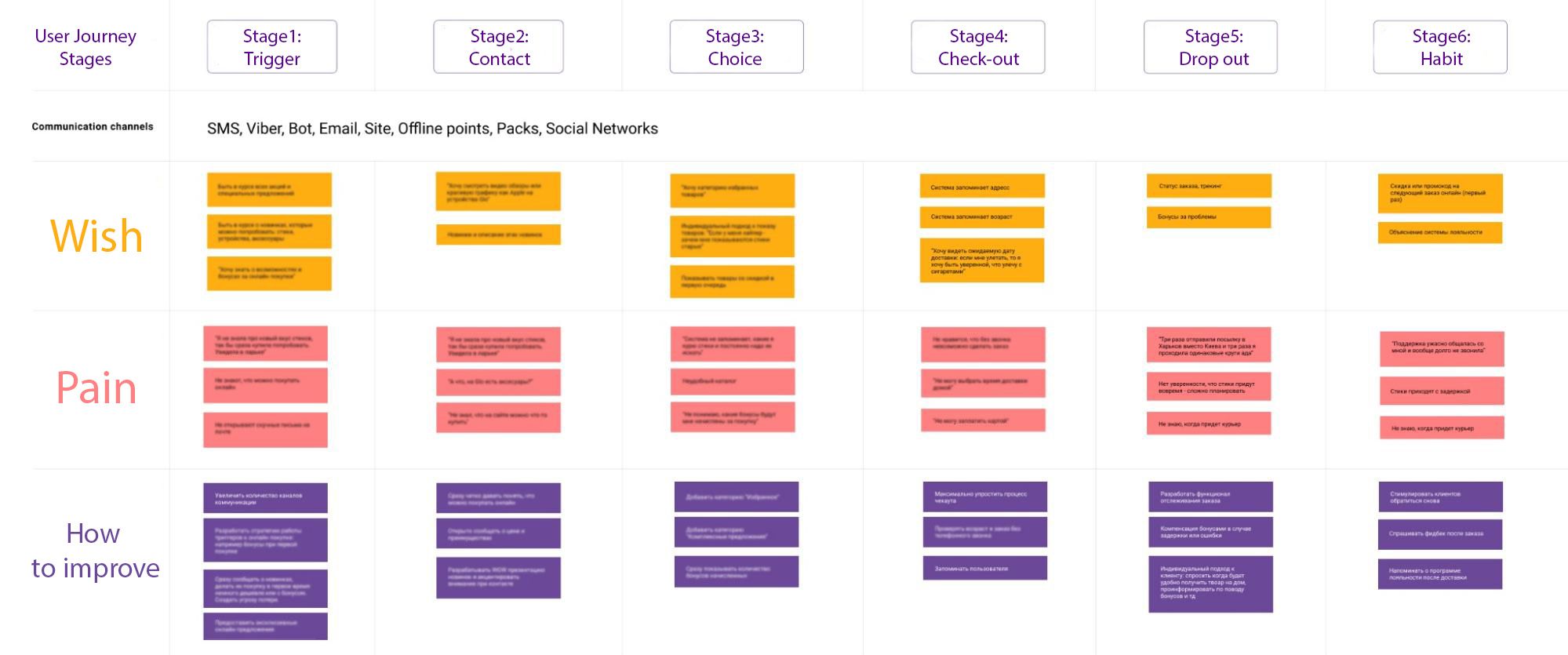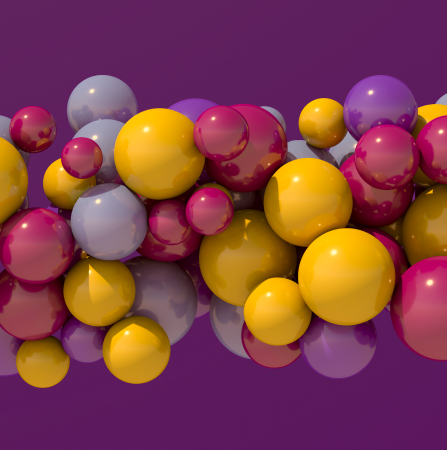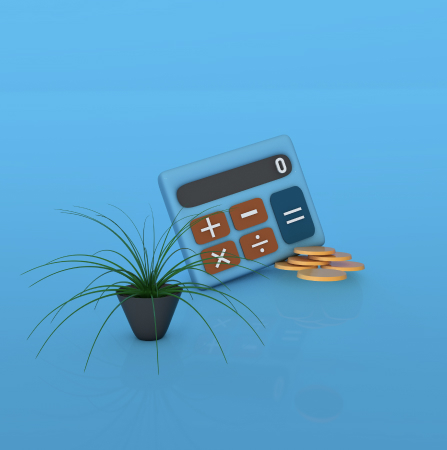This is comprehensive guide is based on the Fulcrum’s experience of developing startup projects, where a thought-through map of interactions with customers is crucial for product to thrive.
This guide will be helpful for:
- Business owners in search of a product-oriented software development company. It will help to understand what a truly interested in the client’s success company can do for them.
- Business owners who are determined to do the research themselves.
- Product managers who have to do everything themselves.
What is CJM and What Do We Use It for
A customer journey map, or CJM for short, is a visualization of a customer’s interactions with a brand. CJM encompasses every step a customer or user takes. Every point of interaction they have with your business is accounted for. The customer’s thoughts, emotions, and difficulties on every step are documented.
Knowing the customer’s journey allows us to gain an accurate understanding of the things we need to do to improve the product. And the service the customers get while buying and using the product. CJM provides precise data that help fine tune the marketing strategy. Emphasizing the wow-effect aspects of the product and service is also easier when you know the user’s journey. As well as eliminate the negative aspects that affect the sales.
Before building the customer journey map our UX designer conducts in-depth user interviews. These interviews allowed us to define customers’ profiles. Their gains and pains. What they lack now and might need in the app.
Applying the interview insights, we create detailed user journey map:
 An example of user journey map
An example of user journey map
What is an In-depth Interview
An in-depth interview is a qualitative research method. It implies a conversation between two or (rarely) three people. The interviewee is a customer or user. Depending on the situation, there could be two interviewees. But this is very rare. The interviewer(s) is the company’s representative(s). If there are two interviewers one of them usually takes notes and doesn’t ask the questions. The interviews are of course recorded so you could analyze them later.
The subject of the conversation is the experience of solving the problem your product or service is meant to solve. The goal is to find the unembellished truth from the customer. The real state of things, not assumptions. You need the user to tell you their real pains, where exactly the issues occur, and why.
What makes an interview an in-depth one? The length of the conversation. It usually takes from 1,5 to 4 hours. The in-depth interview is meant to get first-hand knowledge of the REAL user experience. The conversation is not about your product or service. It’s about your user and their experience. And it takes time to delve deeper and truly understand that.
What the conversation allows to discover:
- motives;
- pain points;
- joys;
- use cases;
- context;
- emotions;
- behavioral patterns;
- expectations.
Who to Talk to
Who you interview depends on the idea you have in a discovery of your project. Or the hypothesis you are validating. Your goal is to get as complete a picture as possible. So the more diverse sources of information you can get the better. But if you are interested in the experience of a particular type of customer it makes sense to ask that particular group and no one else.
For example, your focus is on the customers that pay more than $100 a month. Use your analytics tools to single them out. Then contact all of those people and nicely ask if they would like to be interviewed. About 5-10% will agree to talk to you.
And if your focus engulfs the whole user base you need to ask as many different user groups as possible. If you provide a freemium service you can ask paying customers and those who use the service for free. If you run a marketplace you can interview the vendors and the buyers.
To understand what types of customers you have and which of them you need to interview you can create user personas.
How to Conduct the Interview
With a list of questions on hand to refer to you are less likely to forget something important. You will be able to phrase better, clearer questions if you have time to think about them. You will be able to get your team’s feedback on the questions beforehand. And you are likely to feel less stressed while conducting the interview if you come prepared.
Also, make sure to anticipate different responses and come up with follow-up questions.
Which questions NOT to ask
1. Leading Questions:
- What do you like about our service?
- Why do you use our service?
- How would this save your time?
- How does this affect your productivity?
2. Questions that simulate the experience, questions about the future:
- Would you use…
- Would it be convenient…
- Could you imagine…
Don’t ask your interviewees to imagine the experience, appeal to their real experience. If there’s none you need to conduct a usability test first.
3. Closed-ended questions:
- Do you use our product daily?
- How often do you use our product?
4. Questions that guess the user’s emotions:
- Does the word “urgent” make you uneasy?
- How do you feel about the word “urgent” in the notification?
5. Questions containing professional jargon:
- How would you describe the experience of choosing bundles on the website?
- How would you describe the experience of choosing the paid services on the website?
Which questions are good to ask
1. Dialogue provoking questions that will lead the customer to tell their story.
2. Questions about the real experience. It’s imperative you ask questions about the real things that really happened. Not hypotheticals that could happen. It’s ok for the customers to have limited knowledge. They can forget some things or don’t have the experience you are asking about, it’s ok too.
Interview structure
You need to make your interviewee comfortable, build a rapport with them. So starting with lightweight, simple, and friendly questions is a good idea. Generally, we divide an interview into these stages:
Stage 1. Empathy and contextualization. Here we ask questions like:
- Tell us a bit about your day/yourself.
- When, where, and how do you use the product/service?
- What is your experience with using the product/service?
- How did you start using the product/service?
- What do you think about the brand/product/service?
Stage 2. Evaluation of the present. We proceed to the questions like:
- Could you describe your latest experience with every detail?
- What did you like/not like?
- What was good/bad?
Stage 3. Dreams of the future. It’s time to enquire:
- What does the perfect product/service looks like for you?
- If you were the owner of this brand what would you change?
Analyzing the Interview Results for Building a Customer Journey Map
It’s important to understand that data analysis won’t give you ready solutions for the problems you need to fix. What it will give you are the answers to the research questions or goals.
There are a number of frameworks and tools you can use the gathered data for:
- Customer journey map (CJM)
- Point of view (POV)
- Jobs to be Done (JTBD)
- Value proposition canvas (VPC)
- How Might We (HMW)
- etc.
Since we are focused on CJM here and the article is long as it is, let’s not delve into details on other frameworks. But we strongly recommend reading upon them as well.
The research questions already hint at the way to organize the data you received from your users.
- What is the flow for users in a specific category? → CJM
- What motivates the customers to use the service/product? → POV, JTBD, VPC
- How can we improve the current experience for users in a specific category? → CJM, VPC
- What hinders the customers while using the service/product? What blockers are there? → Pains, JTBD, POV
- Do customers understand the new/specific feature? Are they interested in it? → VPC, CJM
- Does the feature affect the choice of an item? → CJM, VPC
- What makes the offer relevant to the user? → POV

Analysis process
This is a rather straightforward process. First, we need to digest the information we received. Here we listen to the records we made, read through transcripts and notes.
The next stage of analysis is a discussion. We discuss with the team the insights we received from the customers. And the notes we made while digesting the info. Tools like affinity diagrams are a great help at this stage. At this stage, we also create further notes. We write down all the pains, gains, and jobs we were able to pick out. Then we categorize the insights.
Clasterization comes next. We search the customers’ answers for patterns. We need to find pains/gains/jobs/insights/routines common for at least 3 interviewed customers.
Finally, we structure the data into the framework we’ve chosen to work with (CJM, VPC, POV, HMW, etc.).
Well, as you can see CJM and in-depth interviews are amazing methods. They help you gain insights and deliver better products. A truly product-oriented company doesn’t make whatever it wants, it creates exactly what the users need. If you are looking for such a company, we’re just one call away!


